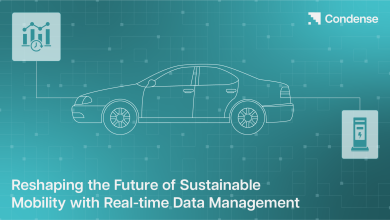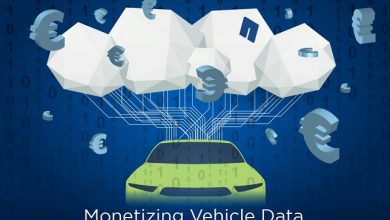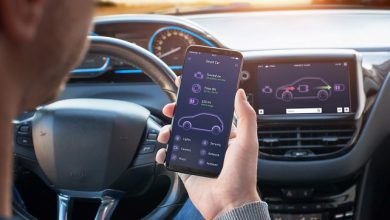Connected Car Based Data Monetization – An Untapped Opportunity for OEMs

“Most opportunities are disguised as problems”
Connected-car features are trickling down to mass market passenger car segments at a rapid pace. The vailability of connected car features currently influences the purchase decision of a particular car brand or variant. A global consumer study by McKinsey conducted in 2020, on Connected, Autonomous, Shared, Electric Mobility technologies, revealed that 37% percent respondents were willing to switch car brands to avail connectivity features.
Quite interestingly, this trend also applies to the fastest growing automotive markets in the world. For instance, in India certain OEMs are seeing a 30% penetration of connected cars in mid and high-end segment SUVs wherein the infotainment units come with a built-in TCU (telematics control unit). The percentage penetration of connected features using the driver’s mobile phone data has seen an even higher proliferation with even mid-variants of sedans, hatchbacks being offered with connected features.
Moreover, connected features such as Over-The-Air (OTA) updates, are becoming enabling technologies for EVs charging and control, and frontier technologies related to software defined vehicles (SDVs). Connected features are on the path to becoming an industry standard, and their convergence with the control system of the vehicle, will blur the lines of them being seen as a separate feature set on the infotainment screen. However, a key challenge for OEMs is to monetize connectivity features provided onboard their products where there is a huge untapped potential.
Data strategies are top of mind in the automotive industry, where connected vehicles are becoming data-gathering hotspots. As vehicles become increasingly connected, leveraging their collected data through novel business models would be a promising value proposition for the automotive industry. This valuable car data eventually paves the way for novel types of data-driven business models (DDBMs), forcing original equipment manufacturers (OEMs) to wade more deeply into connectivity. Consequently, the entire global automotive industry is facing the question of how to monetize this valuable data.
However, no matter which services car data makes possible, monetizing them is not feasible if customers do not see the benefits. For automakers, this is both a massive challenge and a game-changing opportunity. This article sheds light on two main challenges that exist in the connected car space, and how automotive service providers can possibly address them by enabling unique and innovative use cases.
Problem Definition 1 – Connected Car Subscription – Low Retention Rate

- Although connected car capabilities are advantageous to customers, they are not thought to be important enough to be worth a recurring financial commitment.
- Car makers are strongly stuck in a product-centric approach, and they want to move away from it.

Problem Definition 2 – Accumulation of Connected Car Data

Considering an average payload size of telemetry data of 4KB per 15 seconds, one vehicle will produce 1GB Data by taking average 3Hrs car usage per day.
Imagine 20,000 connected vehicles are produced every month for an OEM and it will add 250 TB data to server every year.
- According to a recent Intel Corporation report, an autonomous car generates approximately 4TB of data per day.
What will we do with this enormous amount of data? How can OEMs make the most of this? Most OEMs are uncertain of the answer to this, and they are having trouble doing so.
Utilization of Data
Car data monetization opportunity begins with an environment in which customers believe that there is something of value within it for them and that the subscription cost is worth the benefit. At regular intervals, data is pushed from the car and gathered in cloud storage. Currently, only the most basic use cases—that involve driving history and other trip-related data—are being offered. However, there is significant potential for creating a plethora of exciting user-centric features that enhance the “Experience on wheels” The amount of data is huge, and usability depends on how we process the data. All customer’s data can be categorized based on persona by converting data to wisdom. The persona segmentation focusses on the “Who does what, when they do it, and why “to provide insight into behavior pattern. Based on user persona, the system can push personalized and contextualized recommendations or suggestions. However, the collection and analysis of such data is subject to customer consent and being in conformance with data privacy regulations applicable in the geographies where it is implemented.

The monetization of Connected Car data requires a set of enablers in the ecosystem.
On-board the car: Internet connectivity, navigation system, HMI, high performance controller, sensors etc.
Infrastructure: 4G/5G Mobile towers, big-data analytics, artificial intelligence, cloud computing, smart road infrastructure, software platforms etc.
Potential Revenue Streams
1. Data Driven Recommendation for Tyre Change

Since tyres are subjected to significantly harsh operating conditions, it is important to continuously assess and forecast their health. Multiple ML/AI algorithms utilize cloud-based data for continuous learning, which aids in anticipating tyre wear and/or failure and alerting end-users to make right decisions when they are needed. OEMs could potentially recommend the product at the greatest discount through their partnerships with tyre manufacturers. This will enable the buyer to purchase the item for a lower cost, and OEM will also benefit from such a business model.
2. Tailored Advertisement

How can we take advantage of this opportunity using connected car features, where movie production firms are spending millions on marketing? Based on consumer preferences like fan-base and language, OEM can use the vehicle data to push movie trailers or any other promotional items to car infotainment systems.
3. Restaurant Suggestion Based on Customer Food Habits
Based on previous visits and order history, it will be possible to determine the user’s cuisine preferences. The number of visits and number of orders will be used to determine customer preference. This information will be used to assign a client’s persona, and suggestions for restaurants will be made in accordance with that persona. If OEM has any relationships with those eateries, this could potentially be developed into a model for generating income.

4. Usage Based Insurance (UBI)
Pay How You Drive (PHYD) is a model in which customers pay vehicle insurance premium based on their driving behavior. The data gathered from the vehicle will be used to evaluate driving behaviors in various circumstances and identify driving risk factors. The development of connected technologies produces mature UBI and telematics systems that carefully examine driving behavior trends and take them into account when personalizing pricing for each customer. If the policyholder exhibits a safe driving pattern, they may be eligible for further premium discounts. Additionally, there is potential for OEM to earn revenue, by providing such data to insurance firms.

Monetization Model

The two main categories of revenue generation for OEM are subscription and third-party services. Customers have the option of choosing a premium account or a free account, subject to watching any advertisements the OEM may promote. Another approach allows customers to enrich OEM data models by contributing their personal information for a much lower premium fee, creating a win-win scenario for both parties.
Digitization in automotive and connected cars are redefining competitive dynamics in the industry. Innovation-based partnerships between OEMs and diverse suppliers and service providers are becoming more and more important as trends in these areas make it challenging for participants to succeed on their own in this environment:

OEMs have a lot of work to do on increasing the amount of data generated that can be useful for monetization. There are several low-hanging fruits that OEM can monetize such as prognostics services, and security applications such as remote ignition disablement or slowdown for stolen vehicle protection and assistance. Also, exciting applications are possible in areas such as parking as a service, productivity enhancement services and integration into multimodal transport networks.
Conclusion
Data-driven services are developed to generate new value streams, which eventually result in new market configurations and the appearance of new business models. The data produced by operating automobiles opens the door for new categories of data-driven services in the automotive sector. Although still in its infancy, the monetization potential of automobile data is enormous. The business models that will support these use cases are already developing and car data-enabled business models have the potential to transform transportation into a service. A clear strategic shift towards developing digitalization as a core revenue stream is required. This would lead to the allocation of significant investments to enhance product development capabilities, by successful collaborations with key players in the digital ecosystem.
Author:
Haseel Veluthethodi is FOTA – Senior Systems Engineer at Tata Technologies. He is an electronics engineer in the automotive industry playing a crucial role in the areas of Connected Car& Telematics..



